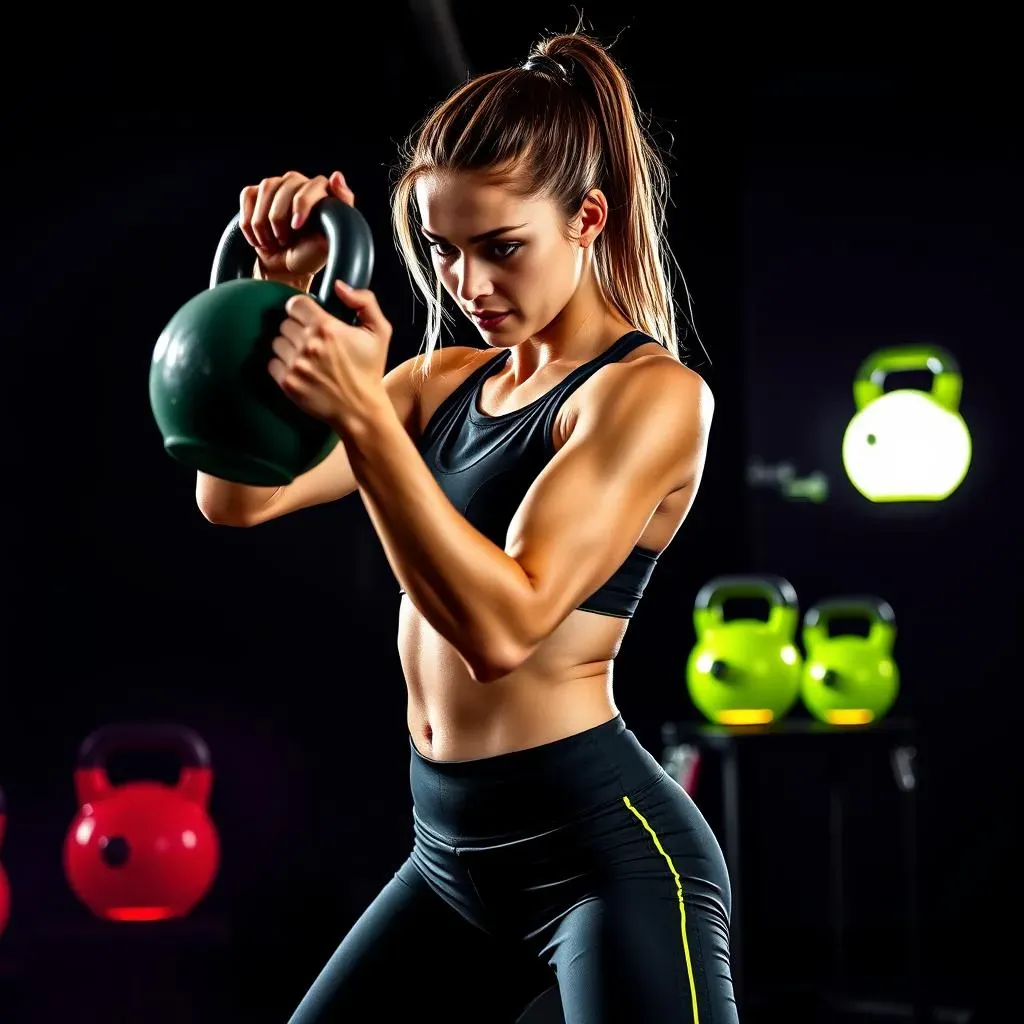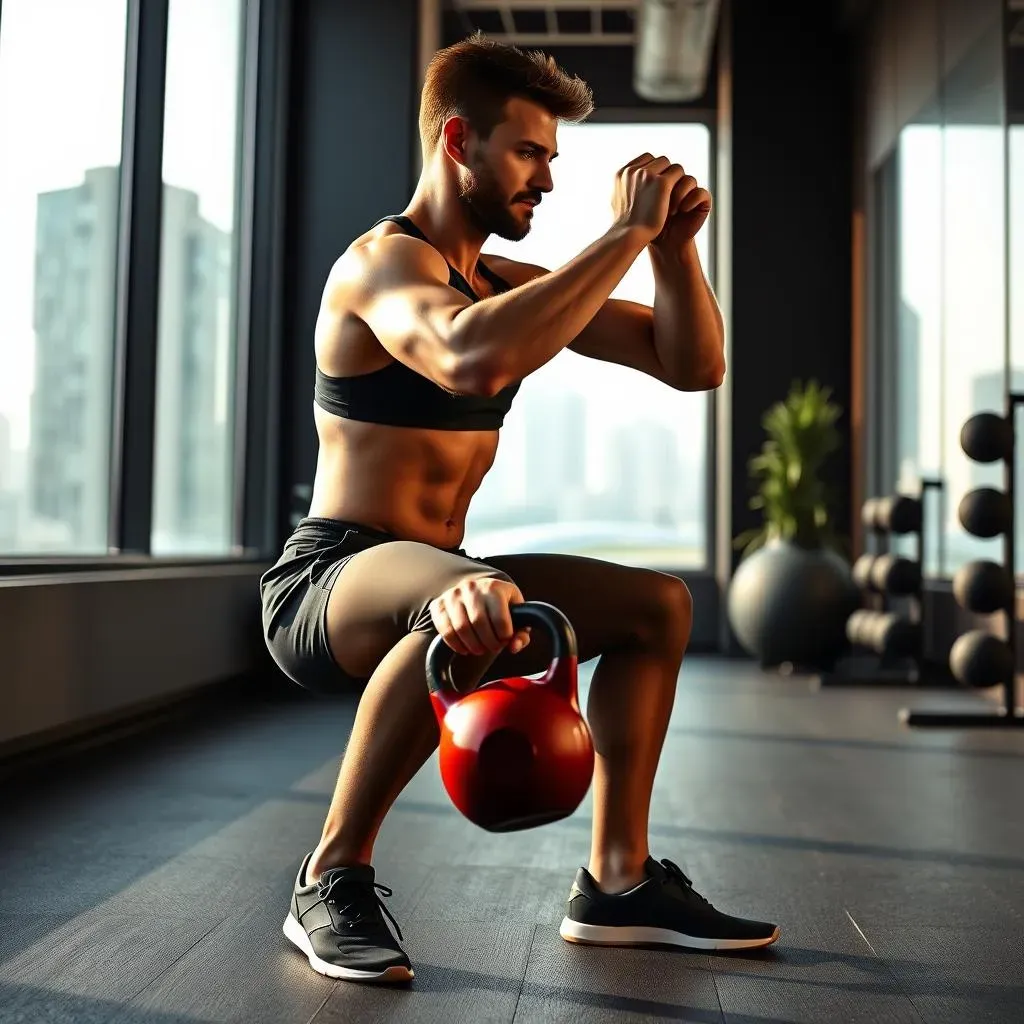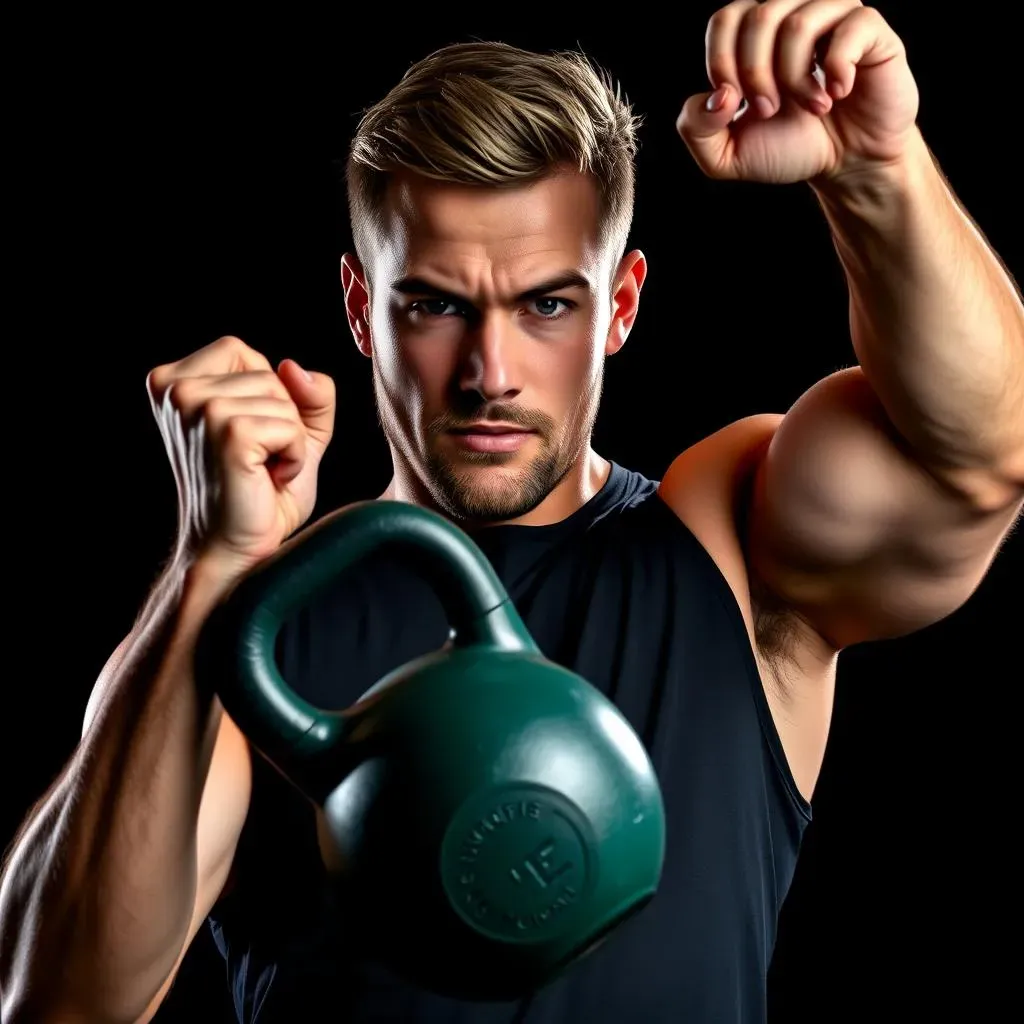Table of Contents
Ready to unlock your inner powerhouse? Kettlebells aren't just for seasoned athletes; they're a fantastic tool for anyone looking to build strength, endurance, and overall fitness. This article is your beginner's roadmap to mastering the fundamental movements. We'll explore the 5 basic kettlebell exercises that form the bedrock of any effective kettlebell workout. Think of these exercises as the alphabet of kettlebell training – once you master them, you can build countless workouts and variations. We'll break down each exercise step-by-step, ensuring you understand the correct form and technique to avoid injury and maximize results. Get ready to learn the kettlebell swing, goblet squat, row, press, and more! This isn't just about building muscle; it's about building a stronger, more resilient you. So grab your kettlebell (start light!), find a comfortable space, and let's embark on this fitness adventure together. By the end, you'll have the confidence to create your own killer kettlebell workouts and transform your fitness journey. Let's get started with these 5 basic kettlebell exercises!
Kettlebell Swings: The Foundation of Your Fitness

Kettlebell Swings: The Foundation of Your Fitness
Mastering the Kettlebell Swing
Hey there, fellow author! So you're diving into the world of kettlebell swings? Fantastic choice! They're the cornerstone of kettlebell training, a dynamic exercise that works wonders for your entire body. Think of it like this: the swing isn't just about moving the weight; it’s about harnessing your body's power, engaging your core, and building explosive strength. It's a full-body workout disguised as a single movement. You’ll feel the burn in your glutes, hamstrings, and even your shoulders. It's seriously efficient.
Start with a lighter kettlebell – trust me, you'll thank me later! Focus on your form. A proper swing starts with a hinge at your hips, not your lower back. Imagine you're trying to slam a door shut with your hips—that's the kind of power you want. Keep your back straight, chest up, and engage those core muscles. A good instructor can make all the difference. If you’re struggling, consider checking out a beginner kettlebell workout for a structured approach.
Common Swing Mistakes | How to Fix Them |
|---|---|
Rounding your back | Engage your core and hinge at the hips. |
Using your arms to lift | Let the power come from your hips and legs. |
Swinging too high | Keep the kettlebell close to your body. |
Building Strength and Endurance with Swings
The beauty of the kettlebell swing lies in its versatility. You can easily adjust the weight and reps to tailor the workout to your fitness level. Start with fewer reps and gradually increase as you get stronger. Don't be afraid to take breaks; listen to your body. Remember, consistency is key. Even short, regular sessions are far more effective than infrequent, intense ones. Think of it as a marathon, not a sprint. Before you know it, you’ll be amazed at how much stronger you've become.
Beyond building strength, kettlebell swings are fantastic for improving cardiovascular health. They’re a surprisingly effective cardio exercise, getting your heart rate up without the monotony of a treadmill. Plus, they improve your coordination and balance. It's like a full-body workout party! For more ideas on incorporating swings into your routine, check out these beginner HIIT workouts that utilize this amazing exercise.
- Start light and focus on form.
- Increase reps gradually.
- Listen to your body and rest when needed.
- Be consistent!
Kettlebell Goblet Squats: Building Lower Body Strength

Kettlebell Goblet Squats: Building Lower Body Strength
Getting Started with Goblet Squats
Alright, let's talk goblet squats! These are awesome for building lower body strength and are surprisingly easier to master than other squat variations. You hold the kettlebell close to your chest, like you're cradling a precious pumpkin (a very heavy, metal pumpkin). This position helps with balance and keeps your posture straight. It's a fantastic all-around exercise that targets your quads, glutes, and hamstrings. Plus, it improves your core stability and overall balance. If you're new to squats, this is a great place to start! Remember to keep your back straight and your chest lifted throughout the movement. For more beginner-friendly workouts, check out this beginner kettlebell workout routine.
One common mistake is letting your knees cave inward. Focus on keeping your knees aligned with your toes, pushing through your heels as you stand back up. Another tip? Don't bounce at the bottom of the squat! Control the movement, and feel that burn in your legs. Start with a lighter kettlebell and focus on perfecting your form before increasing the weight. It's all about quality over quantity, my friend. And remember, proper form prevents injuries!
- Hold the kettlebell close to your chest.
- Keep your back straight and chest up.
- Knees should track over your toes.
- Control the movement; don't bounce.
Progressing Your Goblet Squats
Once you've mastered the basic goblet squat with good form, you can start to add variations to challenge yourself. Try pulse squats, where you pause briefly at the bottom of the squat before pushing back up. You can also incorporate a jump at the top of the movement for an extra cardio boost. But remember, always prioritize good form over adding extra flair. It's not about how many reps you do; it's about how well you do them. And always remember to breathe! A proper breathing pattern will help you maintain control and power throughout each repetition.
Another way to increase the intensity is to add reps. Start with a set of 10-12 reps and gradually increase the number as you get stronger. You could also try adding sets. For example, you could start with 2 sets of 10-12 reps and gradually increase to 3 or even 4 sets. Remember to listen to your body and take rest days when you need them. Don't push yourself too hard, especially when you're just starting out. A consistent approach will bring better results in the long run. Check out this full-body kettlebell workout for more ideas.
Variation | Description |
|---|---|
Pulse Squats | Pause briefly at the bottom of the squat. |
Jump Squats | Add a jump at the top of the movement. |
Incorporating Goblet Squats into Your Routine
Goblet squats are incredibly versatile and can easily be incorporated into various workout routines. They work well as part of a full-body strength training program or as a standalone leg day workout. You can also add them to your warm-up routine to activate your leg muscles before other exercises. They're also great for improving overall athletic performance—think better jumping ability and improved agility. If you find yourself struggling with balance, consider starting with a lighter weight or practicing near a wall for support. Remember, progress takes time and patience!
Don't be afraid to experiment with different variations and find what works best for you. The beauty of goblet squats is their adaptability; you can customize them to fit your fitness level and goals. As you get stronger, you'll naturally increase the weight and reps, making your workouts progressively more challenging. For even more ideas on how to incorporate goblet squats into your training, check out our guide on kettlebell workouts for beginners. Remember, consistency is key! Keep practicing, and you'll see amazing results.
Kettlebell Rows: Sculpting Your Back and Core

Kettlebell Rows: Sculpting Your Back and Core
Getting Started with Kettlebell Rows
Hey there, pal! Let's talk kettlebell rows – a fantastic exercise for building a strong back and core. Think of it as a secret weapon for improving your posture and overall strength. You'll feel it working your lats, rhomboids, and traps – all those muscles that make your back look amazing. It's not just about aesthetics, though; a strong back is crucial for everyday activities and preventing injuries. Plus, you'll get a killer core workout as a bonus!
Start with a lighter kettlebell to master the form. The key is to maintain a flat back and avoid rounding. Imagine a straight line from your head to your heels. Pull the kettlebell up towards your ribs, squeezing your shoulder blades together at the top. Control the movement as you lower the weight back down. Check out this beginner kettlebell workout for more guidance.
- Maintain a flat back.
- Pull the kettlebell towards your ribs.
- Squeeze your shoulder blades together.
- Control the lowering motion.
Building Strength and Endurance with Rows
Once you've nailed the basic form, you can start increasing the weight or reps. Listen to your body; don’t push yourself too hard, especially when starting. Remember, consistency is key! Regular sessions, even short ones, are more effective than infrequent, intense ones. Think of it as a marathon, not a sprint. You'll see strength gains and improved posture in no time. And don't forget the mental benefits – feeling strong is empowering!
Kettlebell rows are also great for improving your grip strength, which is important for many everyday tasks and other exercises. They also engage your core muscles, which helps with stability and balance. For a more comprehensive approach, explore this core strengthening kettlebell routine. You’ll feel the difference in your overall fitness level and strength.
Common Row Mistakes | Corrections |
|---|---|
Rounding your back | Engage your core and keep your back straight. |
Using momentum | Control the movement; use controlled power. |
Not squeezing your shoulder blades | Focus on squeezing at the top of the movement. |
Incorporating Rows into Your Routine
Kettlebell rows are perfect for building a strong, sculpted back. They're versatile and can be part of a full-body routine or a dedicated back workout. You can do them as part of a circuit, superset them with another exercise (like a press), or simply perform sets and reps on their own. Experiment to find what works for you. Remember, consistency and proper form are your best friends when it comes to achieving your fitness goals. And don't forget to rest!
Remember to warm up before your rowing session and stretch afterward. This will help prevent injuries and improve your flexibility. If you're unsure about your form, consider working with a trainer to make sure you're doing the exercise correctly. For more full-body routines, check out these beginner kettlebell workouts. You'll be amazed at the results when you combine proper form, consistency, and a well-rounded approach!
Kettlebell Presses: Boosting Upper Body Power

Kettlebell Presses: Boosting Upper Body Power
Getting Started with Kettlebell Presses
Hey friend! Let's talk kettlebell presses – a seriously effective way to build upper body strength. Think sculpted shoulders, powerful arms, and a boost in overall fitness. It's not just about looking good; strong shoulders and arms are essential for everyday life and preventing injuries. Plus, you’ll improve your core stability as a side effect. We'll focus on the basic military press, but there are tons of variations once you get the hang of it!
Start with a lighter kettlebell to perfect your form. Hold the kettlebell in one hand, close to your shoulder, elbow tucked in. Press the kettlebell straight up, keeping your core engaged and your back straight. Lower the weight slowly and repeat. Focus on controlled movements; don't jerk the weight. If you're feeling lost, check out this beginner arm workout to get some more guidance. Remember, form is crucial to avoid injury and maximize results!
- Start light and focus on form.
- Keep your core tight and back straight.
- Control the movement; avoid jerking.
- Breathe steadily throughout.
Building Strength and Endurance with Presses
Once you've mastered the basic press, you can start increasing the weight or reps. Gradually increase the challenge; don't rush it! Listen to your body; rest when needed. Consistency is more important than intensity – short, regular sessions are better than infrequent, grueling ones. Think of it as a marathon, not a sprint. Before you know it, you’ll be amazed at the strength you've built. And remember, the mental benefits of feeling stronger are huge!
Kettlebell presses are fantastic for improving your overall upper body strength and endurance. They also help build shoulder stability and improve your posture. You'll notice a difference in your daily life, from carrying groceries to simply feeling more powerful. For more ideas on incorporating presses into your routine, check out this beginner kettlebell workout guide for a well-rounded approach.
Common Pressing Mistakes | How to Fix Them |
|---|---|
Arching your back | Engage your core and keep your back straight. |
Using momentum | Press with controlled power; avoid jerking. |
Locking your elbows | Maintain a slight bend in your elbows at the top. |
Incorporating Presses into Your Routine
Kettlebell presses are a fantastic addition to any workout routine. They're great as part of a full-body workout or a dedicated upper body day. You can incorporate them into circuits, supersets, or simply do sets and reps on their own. Experiment to find what you enjoy and what works best for your body. Remember, consistency is key; stick with it, and you'll see incredible results!
Don’t forget to warm up before pressing and cool down afterward. This helps prevent injuries and increases flexibility. If you're unsure about your form, consider working with a trainer to ensure you’re doing it correctly. For more workout ideas, check out this full-body kettlebell workout that includes presses. Remember, consistency and proper form are your allies in achieving your fitness goals. Keep at it, and you'll be amazed!